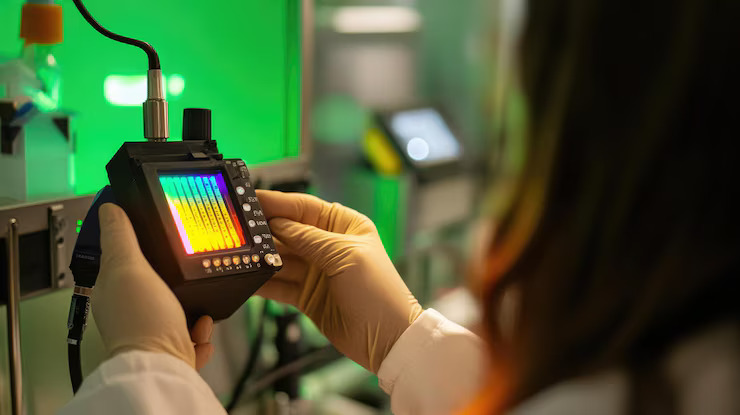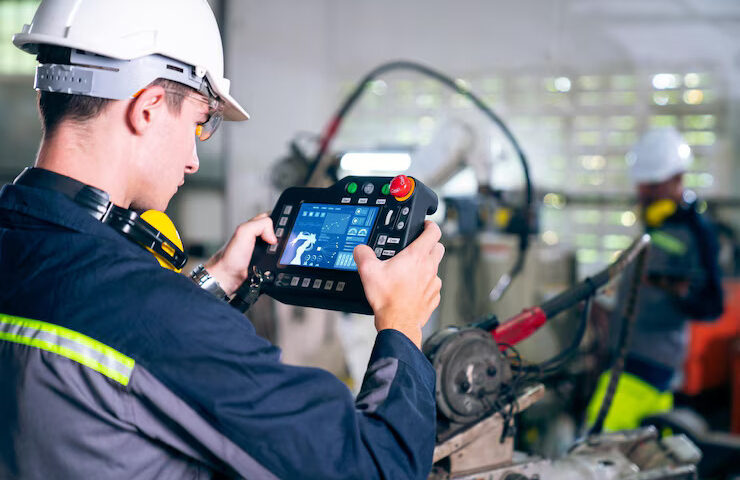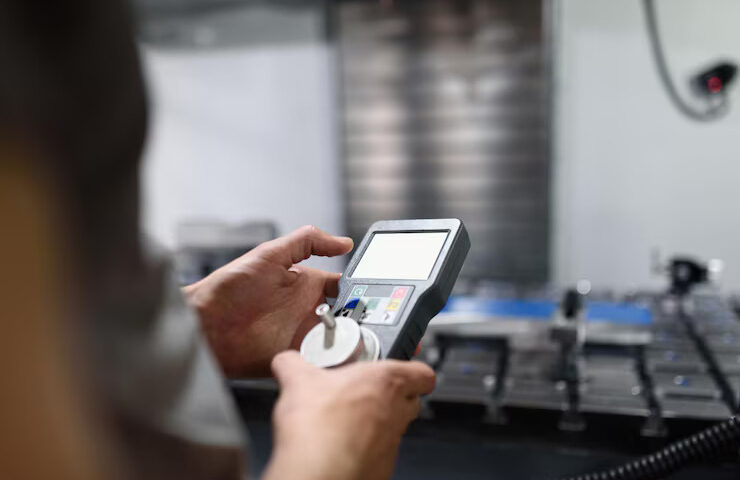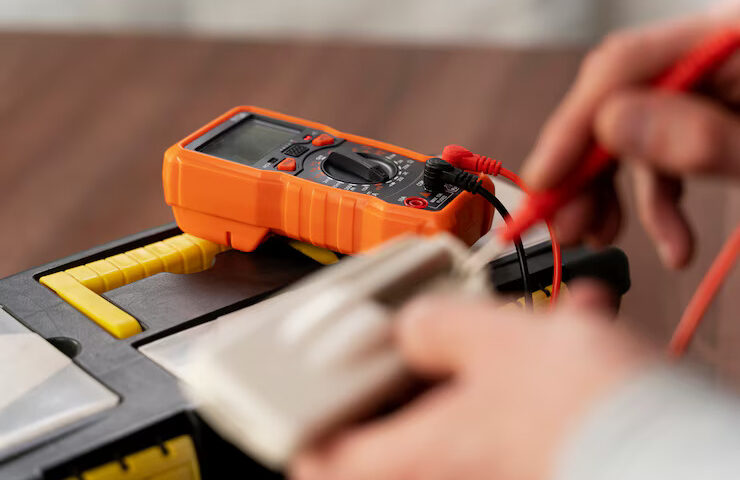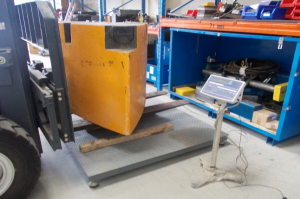
Why Regular Lifting Gear Inspections Can Save You from Costly Downtime
In the world of construction, manufacturing, shipping, and logistics, lifting gear is the backbone of day-to-day operations. From slings and shackles to cranes and hoists, these tools handle the heavy lifting—literally. However, what many businesses in the UAE often overlook is the importance of regular inspection and maintenance of lifting gear.
Failing to inspect your lifting equipment routinely can result in more than just mechanical failure—it can lead to project delays, unexpected costs, safety hazards, and even legal consequences. In contrast, regular lifting gear inspections are a preventive strategy that ensures operational continuity, protects workers, and boosts ROI.
In this article, we’ll explore the top reasons why regular lifting gear inspections can save you from costly downtime, with examples from UAE industries and practical tips from the experts at World Wide Inspection & Calibration Services (WICS).
What is Lifting Gear?
Lifting gear refers to any equipment used to lift, lower, or move heavy loads. This includes:
- Slings (chain, wire rope, synthetic)
- Shackles and hooks
- Eyebolts and turnbuckles
- Lifting beams and spreader bars
- Manual and powered hoists
- Chain blocks
- Crane accessories
These tools are subject to high stress and wear over time, making regular inspection a necessity, not a luxury.
The Real Cost of Downtime
Downtime doesn’t just mean halted operations—it often triggers a ripple effect:
- Lost productivity
- Missed deadlines and penalties
- Overtime wages to make up delays
- Equipment repair or replacement costs
- Safety investigations and legal liability
- Damaged business reputation
A single faulty shackle can shut down an entire operation, costing tens of thousands of dirhams in a single day.
Top Reasons Why Regular Inspections Prevent Downtime
- Early Detection of Wear and Tear
Over time, lifting gear is exposed to:
- Extreme loads
- Environmental elements (dust, heat, salt air)
- Corrosion and rust
- Fatigue from repetitive use
Regular inspections help identify:
- Frayed wire ropes
- Bent hooks
- Cracked welds
- Loosened bolts
- Deformation of shackles
Catching these issues early allows for timely repairs or replacements—preventing unexpected breakdowns in the middle of critical operations.
- Legal Compliance and Audit Readiness
In the UAE, lifting gear inspections are legally mandated under safety and occupational health regulations. Regulatory bodies such as the Ministry of Human Resources and Emiratisation (MOHRE) and international standards like LOLER and OSHA require:
- Routine inspections by a qualified third-party
- Documentation and certification of inspection
- Immediate removal of defective equipment
WICS helps UAE companies stay compliant with inspection documentation and traceable reports—so you’re ready for any regulatory audit without downtime.
- Enhanced Worker Safety
Most workplace accidents involving lifting gear are caused by undetected failures or improper use. If lifting slings snap or hooks detach under load, the consequences can be fatal.
Safe equipment equals safe workers. Regular inspections:
- Prevent load slippage
- Ensure structural integrity
- Boost worker confidence
- Reduce incident reports and compensation claims
Fewer accidents mean fewer interruptions and a stronger reputation in the market.
- Longer Equipment Lifespan
Just like cars need regular servicing to stay roadworthy, lifting gear needs periodic check-ups. Well-maintained equipment lasts longer, reducing the need for costly replacements.
A well-lubricated hoist or a properly aligned lifting beam experiences less wear and tear—meaning it stays in service longer and operates more efficiently.
- Predictable Maintenance Schedules
Without inspection, failures are unpredictable and almost always happen at the worst time—during peak operations, critical lifts, or tight deadlines.
Regular inspections allow you to implement predictive maintenance:
- Schedule repairs during non-peak hours
- Replace aging parts before they break
- Avoid last-minute, high-cost emergency fixes
This means zero unexpected downtime and full control over your operations.
Case Study: Downtime Averted in Dubai
A Dubai-based logistics company operating cranes at Jebel Ali port avoided a full-day work stoppage after a routine inspection by WICS identified a worn-out chain sling. The sling, scheduled for a heavy load operation the following day, was immediately replaced. The cost of the new sling? AED 600. The cost of potential crane downtime? Over AED 30,000 in lost contracts and labor.
Inspection Frequency Guidelines
The frequency of lifting gear inspections depends on:
- Type of gear
- Frequency of use
- Load levels
- Environment (indoor vs. outdoor)
Recommended Intervals:
| Lifting Gear Type | Visual Inspection | Thorough Inspection |
| Slings and Shackles | Daily or Before Use | Every 6 Months |
| Hoists and Chain Blocks | Weekly | Every 12 Months |
| Crane Accessories | Weekly | Every 6–12 Months |
WICS offers both on-site and in-house inspection services, tailored to your schedule and equipment usage patterns.
What’s Included in a WICS Lifting Gear Inspection?
- Visual and Functional Testing
- Check for deformation, corrosion, cracks
- Test operation under load (where applicable)
- Compliance Check
- Verify conformity with international and UAE safety standards
- Load Testing (if required)
- Applying test loads to ensure structural integrity
- Labeling and Certification
- Tagging inspected gear
- Issuing inspection certificates for audit and insurance records
Why Choose World Wide Inspection & Calibration Services?
Operating throughout the UAE, WICS is a trusted name for:
- Lifting equipment inspections
- Crane inspections
- Pressure and temperature gauge calibration
- Electrical measuring equipment calibration
- Operator safety training (non-accredited)
Our strengths include:
- Highly trained inspection engineers
- Quick turnaround times
- Mobile inspection units
- Detailed reporting with photographic evidence
- ISO-compliant documentation
Frequently Asked Questions (FAQs)
- What happens if I skip lifting gear inspections?
You risk equipment failure, operational downtime, legal non-compliance, worker injury, and even lawsuits. Skipping inspections is a costly gamble.
- How often should lifting slings be inspected?
Lifting slings should be visually checked daily (or before each use) and thoroughly inspected by a qualified professional every 6 months.
- Can my staff perform inspections in-house?
While daily checks can be done by trained staff, formal inspections must be carried out by certified professionals like those at WICS to meet legal and insurance requirements.
- What are the signs that lifting gear is failing?
Common signs include visible wear, fraying, rust, deformation, and unusual noises during operation. If you spot any of these, take the gear out of service immediately.
- Do I receive documentation after inspection?
Yes. WICS provides a complete inspection report, certification, and tagging to ensure full traceability and audit readiness.
Final Thoughts
Downtime is the enemy of productivity. It drains resources, erodes profit margins, and damages reputations. Fortunately, one of the simplest and most effective ways to avoid it is through regular lifting gear inspections.
By partnering with World Wide Inspection & Calibration Services, UAE businesses can rest assured their lifting equipment is not only compliant and safe but also primed for uninterrupted operation.



